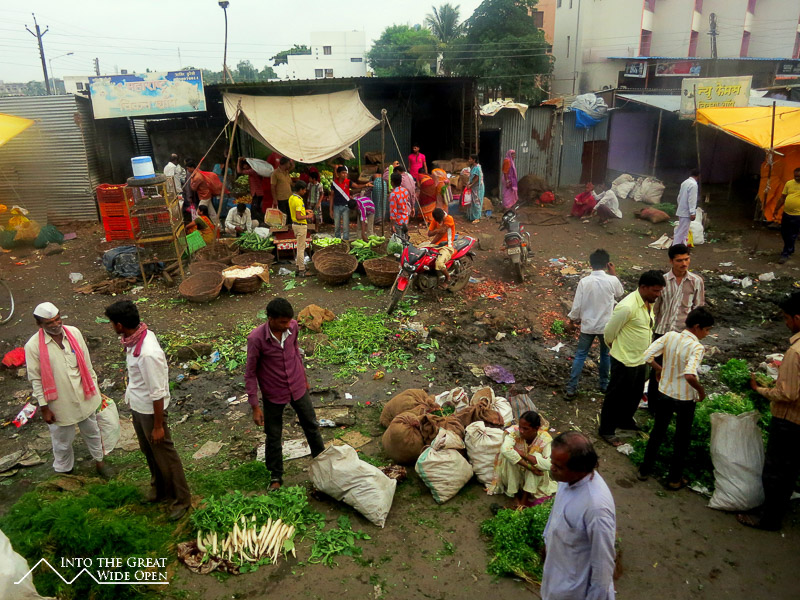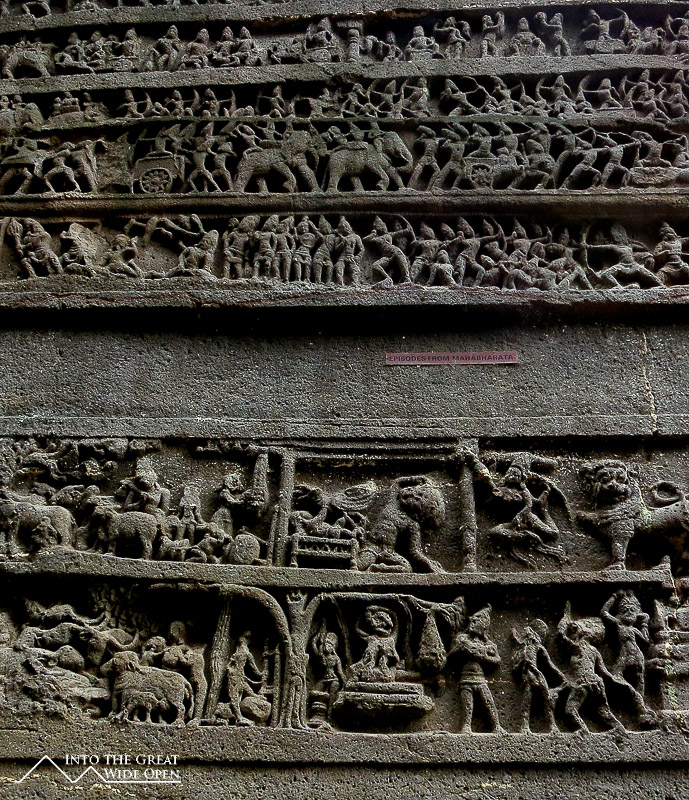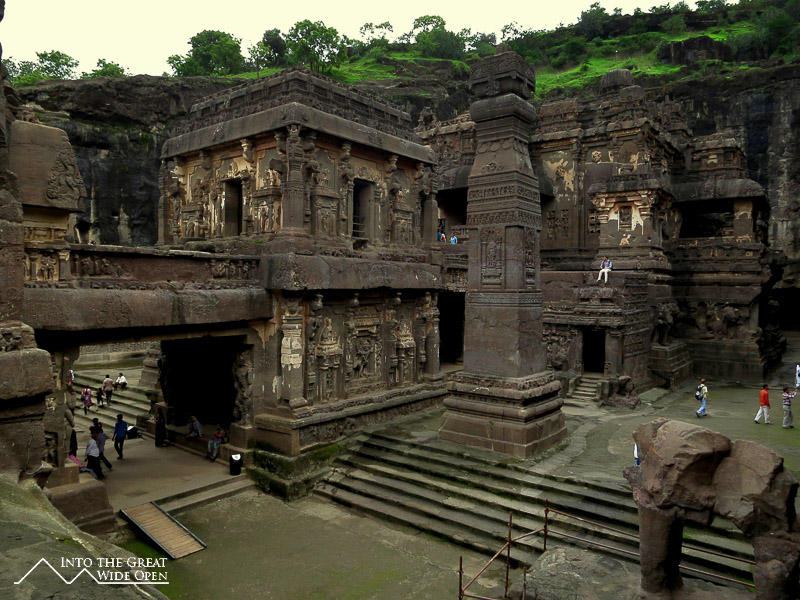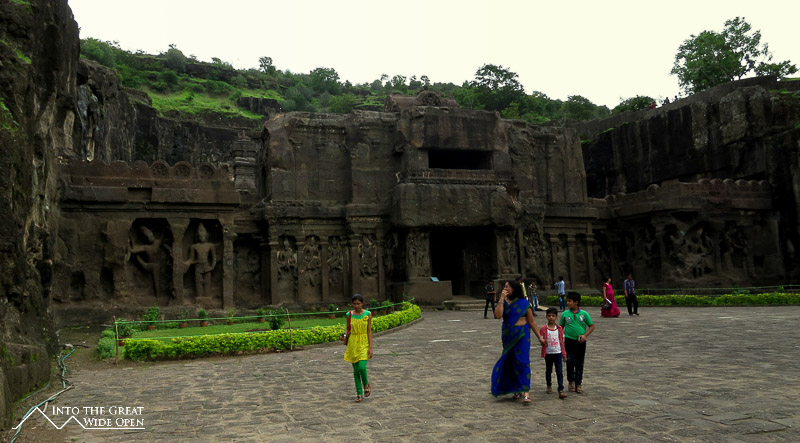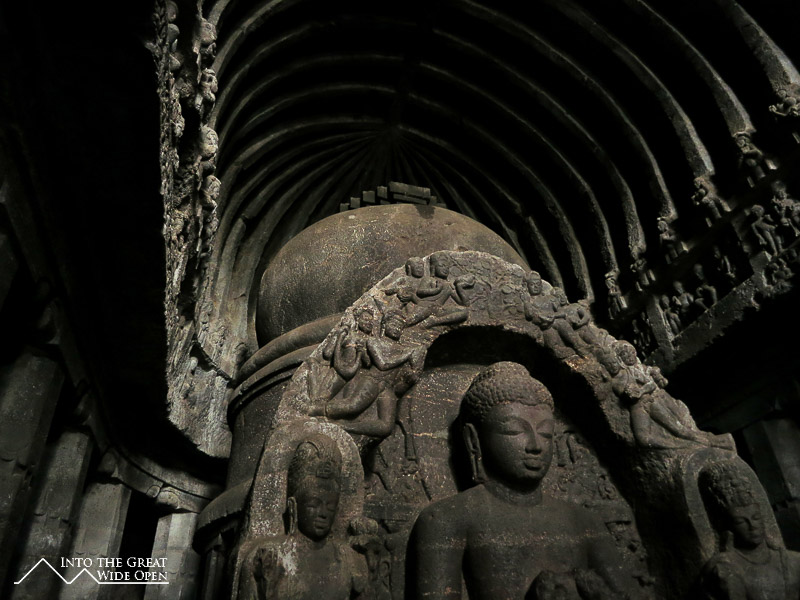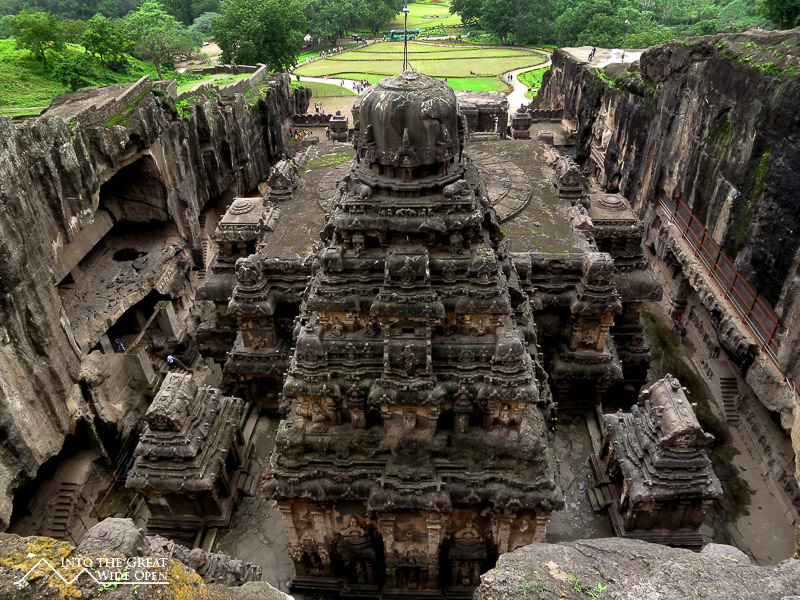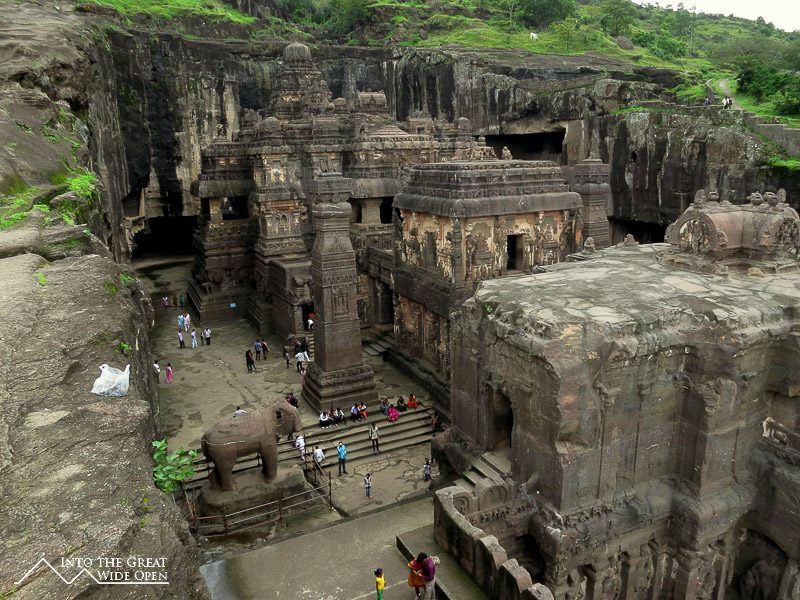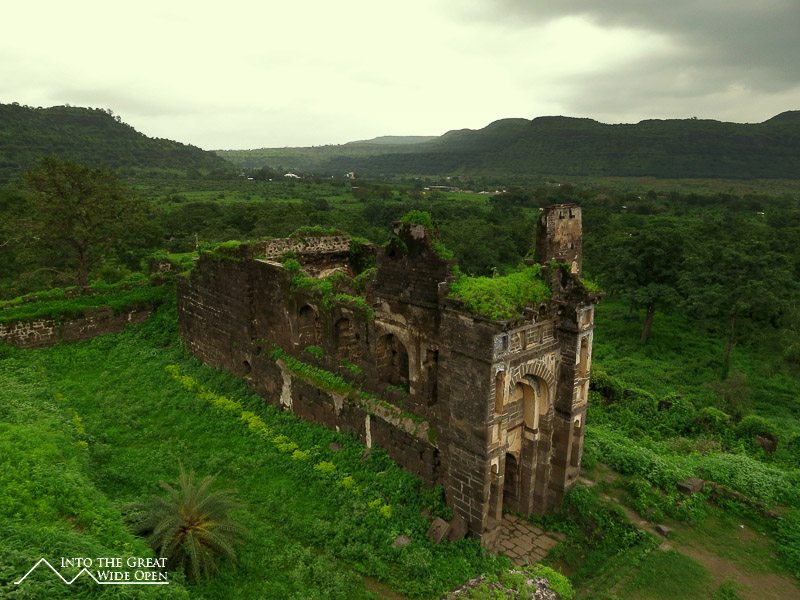Aurangabad, India
Spectacular Caves and Temples and an Amazing Fort
July 28, 2013
Your everlasting summer
You can see it fading fast
So you grab a piece of something
That you think is gonna last
- Steely Dan

Aurangabad itself doesn’t have much to offer. The city is dirty, chaotic, and in places looks like it was ravaged by a natural disaster, although I am not sure if this actually happened or not. Nearby, however, are some spectacular places to visit. First among them are the Ellora Caves. This collection of over 30 caves is located about 45 minutes from Aurangabad in a beautiful peaceful setting. The caves themselves have very distinct characteristics as they were constructed from 400-800 by Buddhists, Hindus, and Jains. The main temple, the Kailasanatha is a spectacular masterpiece that was carved from the top down into a rock outcrop. It took thousands of workers a hundred years to complete. What remains today is an amazingly detailed structure with carvings in nearly every location, complete with its own sub-temple. Supposedly it is the largest monolithic structure in the world and I would say that it is the most amazing man-made structure I have seen. A path leads up around the edge of the temple and gives excellent top views that really illustrate the extent of the carving that was done to create the temple. Had the technology existed at the time this probably would have made for the most epic time lapse video ever produced.
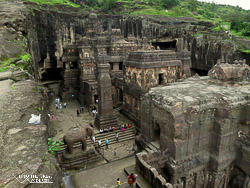
Some of the other caves, particularly cave 10 are also breathtaking. Cave 10 features a giant seated Buddha with graceful arched supports carved into the ceiling. On the north end of the Hindu caves a waterfall rushes off the edge of the cliff into a muddy pool. A walkway runs underneath the waterfall and leads to a staircase carved into the rock face across the way. Sadly a rockslide has closed the walkway and the only way to reach the Jain caves on the other side is by road, going all the way around. A smaller waterfall is located on the south end near the Buddhist caves, which feature more ornate outside carvings. It was these unique features that brought a group of students from a nearby art institute to the site for some drawing practice. Hopefully some of them will become famous one day and we will see drawings and paintings of this amazing site, which, honestly, does not get the publicity that it rightfully deserves.
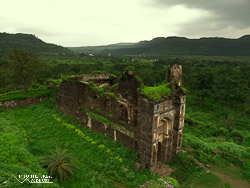
On the way back to Aurangabad I stopped at the Daulatabad Fort. This unusual fort is perched atop a rocky outcrop that rises above the surrounding lush landscape. The fort has multiple series of defenses including several gates, steep moats, and winding passageways. A giant colored minaret dominates the skyline and stands out from the drab colored ruins of the fort. The history of the fort dates to around the 1300s but clearly it rarely sees many foreign tourists these days. That is a shame because the fort is something straight out of the pages of a fantasy novel, especially during the monsoon season when the vibrantly green surroundings and steep cliffs make for picturesque views.
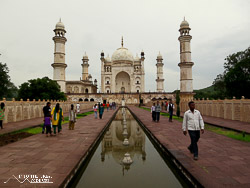
Back in Aurangabad the most famous site is the Bibi ka Maqbara, a sort of miniature Taj Mahal. Unfortunately this ruler was not able to get the budget he wished in order to finish the entire building in fine marble so the result is a less than opulent building that, from a distance, looks grander than it really is. Fortunately I am off to see the real Taj Mahal next weekend so I will be able to see how this one compares to the real thing.
